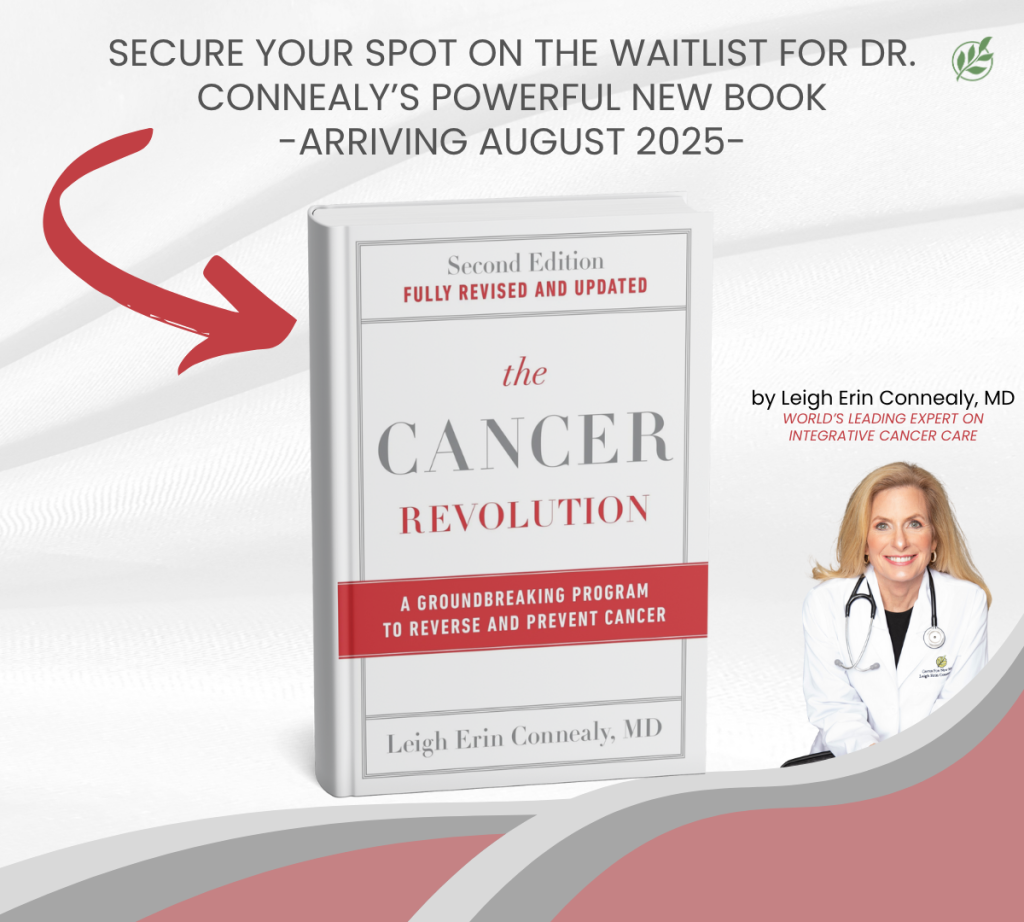Enlarged prostate, also known as benign prostatic hyperplasia (BPH), is a common condition that affects many men as they age. While medical treatments can be effective, exercise is often overlooked as a means of managing and preventing prostate enlargement.
At the Cancer Center for Healing in Irvine, CA, a holistic approach to cancer care is emphasized, including the importance of exercise for prostate health. Dr. Leigh Erin Connealy and her team provide comprehensive treatment modalities designed to improve patients’ overall well-being.
If you are concerned about your prostate health, scheduling a consultation at the Cancer Center for Healing may be a step in the right direction.
Key Takeaways:
- Exercise is an effective means of managing and preventing prostate enlargement.
- The Cancer Center for Healing offers a holistic approach to prostate care, including exercise as a treatment modality.
- Consultation with a healthcare professional can help you take control of your prostate health.
Understanding Enlarged Prostate and Exercise Benefits
Enlarged prostate, also known as benign prostatic hyperplasia (BPH), is a common condition in men over the age of 50. It occurs when the prostate gland grows in size, causing discomfort, urinary problems, and other symptoms. While medications and surgeries are available to treat BPH, regular exercise can also play a critical role in managing and preventing prostate enlargement.
Studies have shown that physical activity can reduce the risk of BPH by improving overall prostate function. Exercise can help regulate hormone levels, reduce inflammation, and enhance blood flow to the prostate gland, all of which contribute to prostate health. Additionally, exercise can promote weight loss and reduce stress, which can further improve prostate function.
To reap the benefits of exercise for prostate health, it’s important to engage in activities that are safe and prostate-friendly. Below, we highlight some exercises that have been shown to be effective in improving prostate function:
| Prostate-Friendly Exercises | Description |
|---|---|
| Kegel exercises | A type of pelvic floor exercise that strengthens the muscles that support the bladder and prostate gland. |
| Aerobic activities | Cardiovascular exercises such as walking, jogging, cycling, and swimming that increase heart rate and improve blood flow throughout the body. |
| Strength training | Resistance exercises that target major muscle groups, such as weightlifting or resistance band workouts. |
| Yoga | A combination of physical postures, breathing exercises, and meditation that can help reduce stress and promote relaxation. |
Before starting any new exercise regimen, it’s important to consult with a healthcare professional to ensure safety and effectiveness. Additionally, it’s important to start slowly and gradually increase intensity to prevent injury or discomfort.
The Benefits of a Comprehensive Approach to Prostate Health
While exercise is a critical component of prostate health, it’s important to take a comprehensive approach to promote overall wellness. At the Cancer Center for Healing in Irvine, CA, Dr. Leigh Erin Connealy offers a holistic approach to prostate care that emphasizes the importance of nutrition, stress management, and other lifestyle factors in addition to exercise. By addressing the root causes of prostate enlargement and promoting a healthy lifestyle, patients can achieve optimal prostate health and overall well-being.
Prostate-Friendly Exercises to Improve Prostate Function
Regular exercise can help improve prostate function and alleviate symptoms associated with an enlarged prostate. The following exercises are considered prostate-friendly and can help improve your overall prostate health:
| Kegel exercises | Kegel exercises involve contracting and relaxing the pelvic muscles located between the anus and the base of the penis. These exercises can help improve bladder control, urinary flow, and sexual function. |
|---|---|
| Aerobic activities | Cardiovascular exercises, such as walking, running, or cycling, can improve blood circulation and reduce inflammation. Aim for 150 minutes of moderate-intensity exercise per week. |
| Strength training | Weightlifting and resistance training can help build muscle mass and improve bone density. Focus on exercises that target the lower body, such as squats and lunges, to support prostate health. |
| Yoga | Yoga poses can help improve flexibility, posture, and overall body awareness. Include poses such as the child’s pose and the cobra pose to promote prostate health. |
Before starting any exercise routine, consult with a healthcare professional to ensure that it is safe and appropriate for your physical condition. Gradually increase the intensity and duration of your workout as your fitness level improves. With consistent effort and proper guidance, you can improve your prostate health through exercise.
Incorporating Physical Activity into Your Routine
Engaging in physical activity is essential for maintaining optimal prostate health. However, finding the motivation to exercise regularly can be challenging for many individuals. Here are some practical tips for incorporating physical activity into your routine:
Set Realistic Goals
When starting an exercise routine, it’s important to set achievable goals. Begin with small, manageable goals, such as taking a daily 20-minute walk or doing 10 minutes of stretching in the morning. As your fitness level improves, gradually increase the duration and intensity of your workouts.
Create a Workout Schedule
Scheduling your workouts can help you stay on track and be consistent with your exercise routine. Choose a time of day that works best for you and stick to it. Consider making exercise a part of your daily routine, such as going for a walk after dinner or doing a few exercises during commercial breaks.
Find Activities You Enjoy
Physical activity doesn’t have to be boring or tedious. Choose activities that you enjoy and that fit your interests and abilities. Consider joining a sports team, taking a dance class, or trying a new form of exercise, such as yoga or Pilates.
Stay Motivated
Staying motivated can be a challenge, especially if you’re just starting an exercise routine. To stay motivated, set realistic goals, track your progress, and reward yourself for achieving milestones. Consider exercising with a friend or family member, as having a workout buddy can help keep you accountable and motivated.
By incorporating physical activity into your routine, you can improve your prostate health and overall well-being. Remember to consult with your healthcare provider before starting any new exercise routine, especially if you have pre-existing health conditions or concerns.
Lifestyle Changes for Prostate Health
Prostate health is closely linked to a person’s lifestyle choices, and making certain changes can have a significant impact on prostate health. Here are some recommended lifestyle changes that may help promote prostate health:
- Eat a healthy diet: A balanced and nutritious diet that is rich in fruits, vegetables, healthy fats, and lean proteins is essential for prostate health. Foods that are high in antioxidants, such as blueberries, tomatoes, and spinach, may be particularly beneficial.
- Avoid smoking and excessive alcohol consumption: Smoking and drinking in excess have been linked to an increased risk of prostate cancer and other health issues. Reducing or eliminating these habits altogether can help promote prostate health.
- Manage stress levels: Chronic stress and anxiety can have a negative impact on prostate health. Engaging in stress-reducing activities, such as yoga or meditation, can help promote relaxation and overall well-being.
- Get regular check-ups: Regular check-ups and screenings are important for early detection of prostate issues and can help prevent more serious health problems down the line. Men over the age of 50, or those with a family history of prostate cancer, may need to be screened more frequently.
By making these lifestyle changes, individuals can support their prostate health in conjunction with exercise and other holistic treatment approaches.
Natural Remedies for Enlarged Prostate
Natural remedies have long been used to alleviate symptoms of an enlarged prostate. While there are no definitive natural remedies for prostate issues, some have shown promising results. However, it is always best to consult a healthcare professional before trying any natural remedies.
“Herbal supplements such as saw palmetto and pygeum are commonly used to promote prostate health. Saw palmetto has been shown to be effective in reducing urinary symptoms associated with enlarged prostate, while pygeum has been used to improve urinary flow.”
In addition to herbal supplements, other natural remedies that may have benefits for prostate health include zinc, vitamin C, and lycopene. These nutrients can be found in healthy foods such as tomatoes, citrus fruits, nuts, and seeds.
The Role of Diet in Prostate Health
A balanced and nutritious diet is essential for maintaining prostate health and preventing prostate-related problems. The following foods are known to be particularly beneficial for prostate health:
| Fruits and Vegetables | Antioxidants found in fruits and vegetables help to protect the prostate from oxidative stress, which has been linked to an increased risk of prostate cancer. Aim for 5 servings of fruits and vegetables per day, including leafy greens, berries, and cruciferous vegetables such as broccoli and cauliflower. |
|---|---|
| Healthy Fats | Omega-3 fatty acids found in fish and certain nuts and seeds are known to have anti-inflammatory properties that can help reduce the risk of prostate cancer and prevent prostate enlargement. Olive oil, avocado, and other sources of monounsaturated and polyunsaturated fats are also beneficial. Avoid saturated and trans fats found in processed and fried foods. |
| Lean Proteins | Protein is essential for muscle growth and repair, but too much red meat and high-fat dairy products can increase the risk of prostate cancer. Opt for lean protein sources such as fish, poultry, beans, and tofu, and limit red meat and dairy intake. |
In addition to a healthy diet, it is important to stay hydrated and limit alcohol and caffeine intake, as both can irritate the prostate gland. Incorporating exercise into one’s routine can also help support a healthy diet and overall prostate health.
The Cancer Center for Healing: Comprehensive Prostate Care
The Cancer Center for Healing in Irvine, CA provides comprehensive care for those seeking to improve their prostate health. Led by Dr. Leigh Erin Connealy, a renowned specialist in cancer care, the center emphasizes a holistic approach to health and wellness.
At the Cancer Center for Healing, patients receive individualized care that focuses not only on treating cancer but also on improving overall health and vitality. The center offers a wide range of treatment modalities, including exercise therapy, nutritional counseling, and natural remedies, all of which work together to support prostate health.
If you are interested in learning more about the Cancer Center for Healing’s approach to prostate care or to schedule a consultation, please contact the center by phone or email.
| Contact Information | |
|---|---|
| Phone: | (949) 680-1880 |
| Email: | info@cancercenterforhealing.com |
Don’t wait to take control of your prostate health. Contact the Cancer Center for Healing today to start on the path to wellness.
Exercise and Prostate Cancer Prevention
Regular physical activity has been linked to a reduced risk of prostate cancer. Several large-scale studies have found that men who engage in regular exercise are less likely to develop prostate cancer or experience tumor growth than those who lead sedentary lives.
A study published in the Journal of the National Cancer Institute found that men who performed moderate to vigorous physical activity for over three hours a week had a 61% lower risk of developing advanced prostate cancer than those who exercised less. Another study published in Cancer Epidemiology, Biomarkers & Prevention found that men who were physically active had a 53% lower risk of developing localized prostate cancer than those who were not active.
While the exact mechanisms behind the link between exercise and prostate cancer prevention are not fully understood, it is believed that physical activity may help regulate hormone levels and reduce inflammation, both of which are believed to play a role in the development and progression of prostate cancer.
It is important to note that exercise alone cannot prevent prostate cancer, but rather, it is one component of a healthy lifestyle that can contribute to overall prostate health and well-being. Along with regular exercise, maintaining a healthy diet, avoiding smoking and excessive alcohol consumption, managing stress levels, and getting regular check-ups are all important factors in preventing prostate cancer and maintaining prostate health.
Tips for Starting an Exercise Routine
Starting an exercise routine can be intimidating, especially if you’re new to physical activity or have health concerns such as an enlarged prostate. However, incorporating exercise into your daily routine can have significant benefits for your prostate health and overall well-being. Here are some tips for starting an exercise routine:
- Set realistic goals: Start by setting achievable goals that fit your needs and limitations. Consider your fitness level, time constraints, and personal preferences when determining your goals.
- Start slow and gradually increase intensity: Begin with low-impact activities such as walking, biking, or swimming and gradually increase the intensity and duration of your workouts. Avoid pushing yourself too hard, too fast, as it increases the likelihood of injury or burnout.
- Seek professional guidance if needed: If you have health concerns or specific fitness goals, consider seeking guidance from a healthcare professional or certified personal trainer. They can help you develop an exercise plan that meets your needs while minimizing the risk of injury.
- Listen to your body: Pay attention to how your body responds to exercise and adjust your routine accordingly. If you experience pain, dizziness, or discomfort, modify your workout or take a break.
- Find activities you enjoy: Exercise doesn’t have to be a chore. Try different activities until you find something you enjoy, whether it’s hiking, dancing, or playing a sport. This can help you stay motivated and committed to your routine.
Remember, consistency is key when it comes to exercise. Even small, regular workouts can have significant benefits for your prostate health and overall well-being. Start slowly and gradually incorporate more physical activity into your daily routine. Your body and your prostate will thank you!
Exercise and Overall Well-being
Regular exercise can provide numerous benefits beyond just prostate health. In fact, engaging in physical activity can enhance overall well-being and quality of life. Studies have shown that exercise can improve cardiovascular health, boost energy levels, aid in weight management, and enhance mood.
When it comes to prostate health specifically, exercise can also lower the risk of developing prostate cancer. By maintaining a healthy weight, reducing inflammation, and improving overall immune function, regular physical activity may be an effective preventive measure against prostate cancer.
Maintaining Prostate Health for Life
Integrating exercise and other healthy habits into a long-term routine is essential for maintaining optimal prostate health throughout life. In addition to exercising regularly, individuals can take proactive steps to reduce their risk of prostate issues and promote overall well-being.
Regular check-ups and screenings are crucial for detecting any potential prostate problems early on. Men over the age of 50 should undergo a prostate-specific antigen (PSA) test and digital rectal exam (DRE) every year to monitor for any changes or abnormalities.
Maintaining a healthy diet and avoiding smoking and excessive alcohol consumption can also help prevent prostate issues. A prostate-friendly diet should include plenty of fruits, vegetables, healthy fats, and lean proteins.
Stress management techniques, such as meditation or deep breathing exercises, can also contribute to lower stress levels and promote prostate health.
By incorporating exercise, healthy habits, and regular check-ups into their lifestyle, men can maintain optimal prostate health for life. It’s essential to prioritize prostate health, and taking action now can lead to better health outcomes down the road.
Conclusion
Exercise is an essential component of maintaining prostate health and overall well-being. By incorporating prostate-friendly exercises into one’s routine, individuals can manage and prevent prostate enlargement, reducing the risk of developing prostate cancer. The Cancer Center for Healing in Irvine, CA offers a comprehensive, holistic approach to prostate care under the guidance of Dr. Leigh Erin Connealy.
Readers are encouraged to take action and integrate exercise and other healthy habits into their daily routines. In combination with a balanced diet and regular check-ups, exercise can help maintain prostate health for life. Schedule a consultation with the Cancer Center for Healing by contacting them today.
FAQ
Q: What is the significance of exercise for enlarged prostate?
A: Exercise plays a vital role in improving prostate health and overall well-being. It can help manage and prevent prostate enlargement, promoting better prostate function.
Q: How can exercise benefit prostate health?
A: Exercise has positive effects on prostate health by reducing the risk of prostate enlargement and lowering the likelihood of developing prostate cancer. It also improves cardiovascular health, helps with weight management, increases energy levels, and enhances mood.
Q: What are the prostate-friendly exercises to improve prostate function?
A: Prostate-friendly exercises include Kegel exercises, aerobic activities, strength training, and yoga. These exercises can help improve prostate function and overall prostate health.
Q: How can physical activity be incorporated into daily routines?
A: It is important to find physical activities that are enjoyable and to create a workout schedule. Consistency is key in incorporating physical activity into daily routines. Setting realistic goals and staying motivated are also crucial.
Q: What lifestyle changes can complement exercise for prostate health?
A: Maintaining a healthy diet, avoiding smoking and excessive alcohol consumption, managing stress levels, and getting regular check-ups are recommended lifestyle changes that can complement exercise in promoting prostate health.
Q: Are there any natural remedies for enlarged prostate?
A: Some natural remedies, such as saw palmetto and pygeum, may help alleviate symptoms of an enlarged prostate. However, it is important to consult with a healthcare professional before trying any natural remedies.
Q: How does diet affect prostate health?
A: Diet plays a crucial role in maintaining prostate health. Consuming fruits, vegetables, healthy fats, and lean proteins as part of a balanced and nutritious diet is beneficial for prostate health.
Q: What is the Cancer Center for Healing’s approach to prostate care?
A: The Cancer Center for Healing, under the guidance of Dr. Leigh Erin Connealy, offers a comprehensive and holistic approach to prostate care. They provide specialized treatment modalities and encourage a holistic lifestyle for optimal prostate health.
Q: Can exercise help prevent prostate cancer?
A: Regular physical activity has been linked to a reduced risk of prostate cancer. Engaging in exercise, alongside other healthy lifestyle choices, can help in preventing the development of prostate cancer.
Q: What are some tips for starting an exercise routine for enlarged prostate health?
A: When starting an exercise routine, it is important to set realistic goals, start slowly and gradually increase intensity, seek professional guidance if needed, and listen to one’s body. Taking control of prostate health through exercise is empowering.
Q: How does exercise contribute to overall well-being?
A: Exercise has numerous benefits beyond prostate health. It improves cardiovascular health, helps with weight management, increases energy levels, and enhances mood, ultimately contributing to overall well-being.
Q: How can prostate health be maintained for life?
A: Integrate exercise and other healthy habits into long-term routines, prioritize regular check-ups and screenings, and make prostate health a lifelong priority for maintaining optimal prostate health.
Conclusion
Exercise is essential for improving prostate health and overall well-being. By incorporating exercise into daily routines and making lifestyle changes, individuals can take control of their prostate health. The Cancer Center for Healing, led by Dr. Leigh Erin Connealy, offers a comprehensive approach to prostate care. Contact the center to schedule a consultation and prioritize prostate health.











